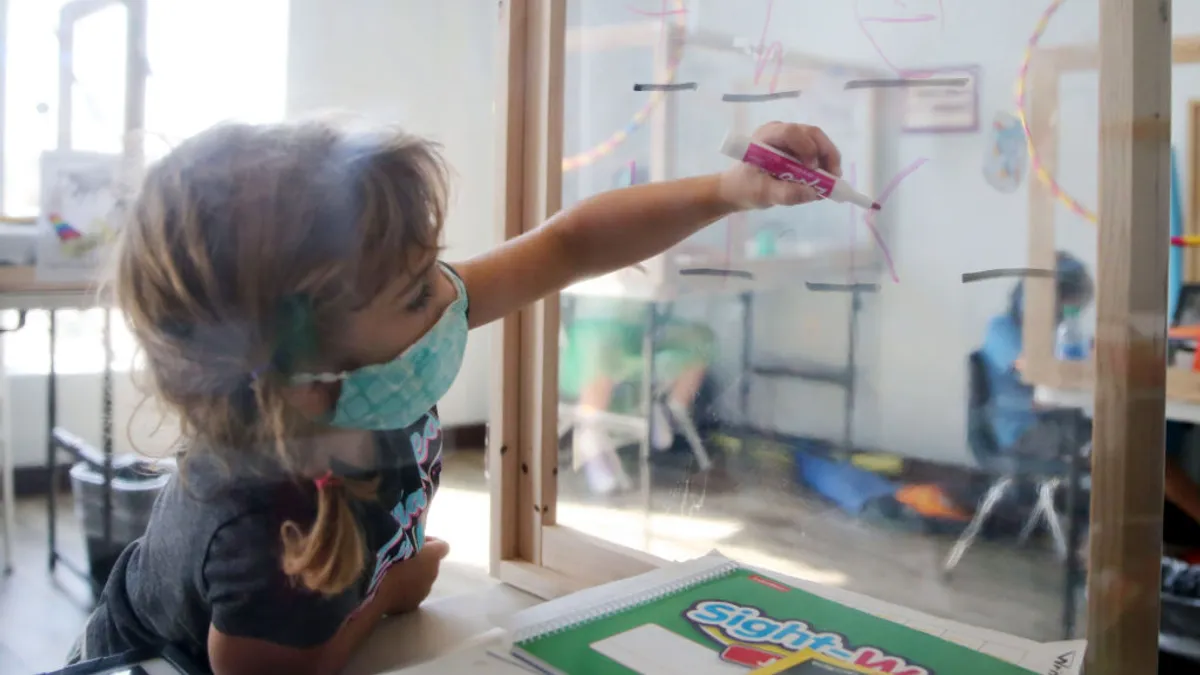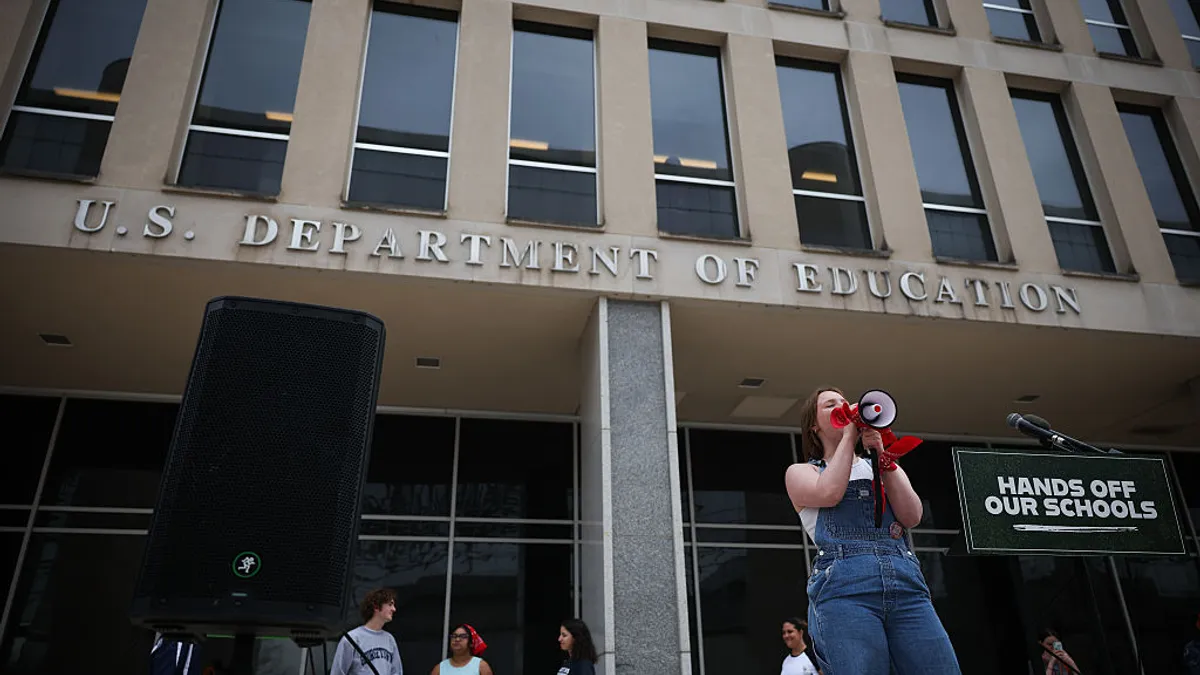When the class of 2021 at Putnam City High School was asked where they wanted to hold their prom, district administrators were anticipating suggestions for a variety of picturesque venues around Oklahoma City.
But their request was a pleasant surprise to staff — the students chose to hold prom at nearby James L. Capps Middle School, a then-new building in Putnam City Schools.
The school, which opened in 2020, sits on 38 acres and features a spring-fed creek that runs under a glass skybridge connecting different wings of the building. With its tall glass windows and large indoor gathering areas, Capps is a source of pride for the community.
"It has become a destination for all of our schools," said Putnam Superintendent Fred Rhodes. "It's just off-the-charts cool."
The enthusiasm for the building can be traced to the district's efforts to include student and staff voice in the school design process, Rhodes said.
Students and staff "live in the building day-in and day-out. They know what is important to them and what will work," he said. "When you are involved in design, it fits what you need."
As districts across the country renovate schools or build new ones, they are more frequently using formal ways to gather input from the people most connected to the spaces — the staff and students.
In some ways, that feedback process can slow the pace of a project, architect firms and school administrators say. But mostly it's a positive trend, they add, because it ensures confidence that the new spaces will get maximum use.
Creating spaces ideal for core academic learning is the main driver behind school design and the efforts to gather input. But nonacademic elements, such as cultural and whole-child support features, are also emerging at the request of school communities.

Texas' Austin Independent School District, for instance, opened the relocated Eastside Early College High School in 2021 with modernized spaces that also highlight the school's historic significance in the community. The school was built on the site of the original L.C. Anderson High School, which served Austin’s African American community for 82 years before closing in 1971 as part of desegregation efforts.
The school's hilltop site offers views of Austin's business district, and a walking path connects it to Austin Community College. Other highlights are a community center within the school and a gallery featuring L.C. Anderson High School’s history and items of historic significance.
Global design firm Perkins & Will worked with the district on the design, as well as with the George Washington Carver Museum and Austin History Center to help create visuals of the L.C. Anderson school’s history that are displayed inside the campus, according to the district.
Here, we give a closer look at how the design of two schools incorporated community input.
Capps Middle School
Rhodes says that as much as he visits schools in his role as Putnam superintendent, he doesn't know exactly what students and staff need unless he asks them.
For the construction of Capps Middle School, which houses about 900 students in grades 6-8, two separate bonds approved by voters helped fund the build, Rhodes said. The design process began in 2017, and the project cost just over $48 million.
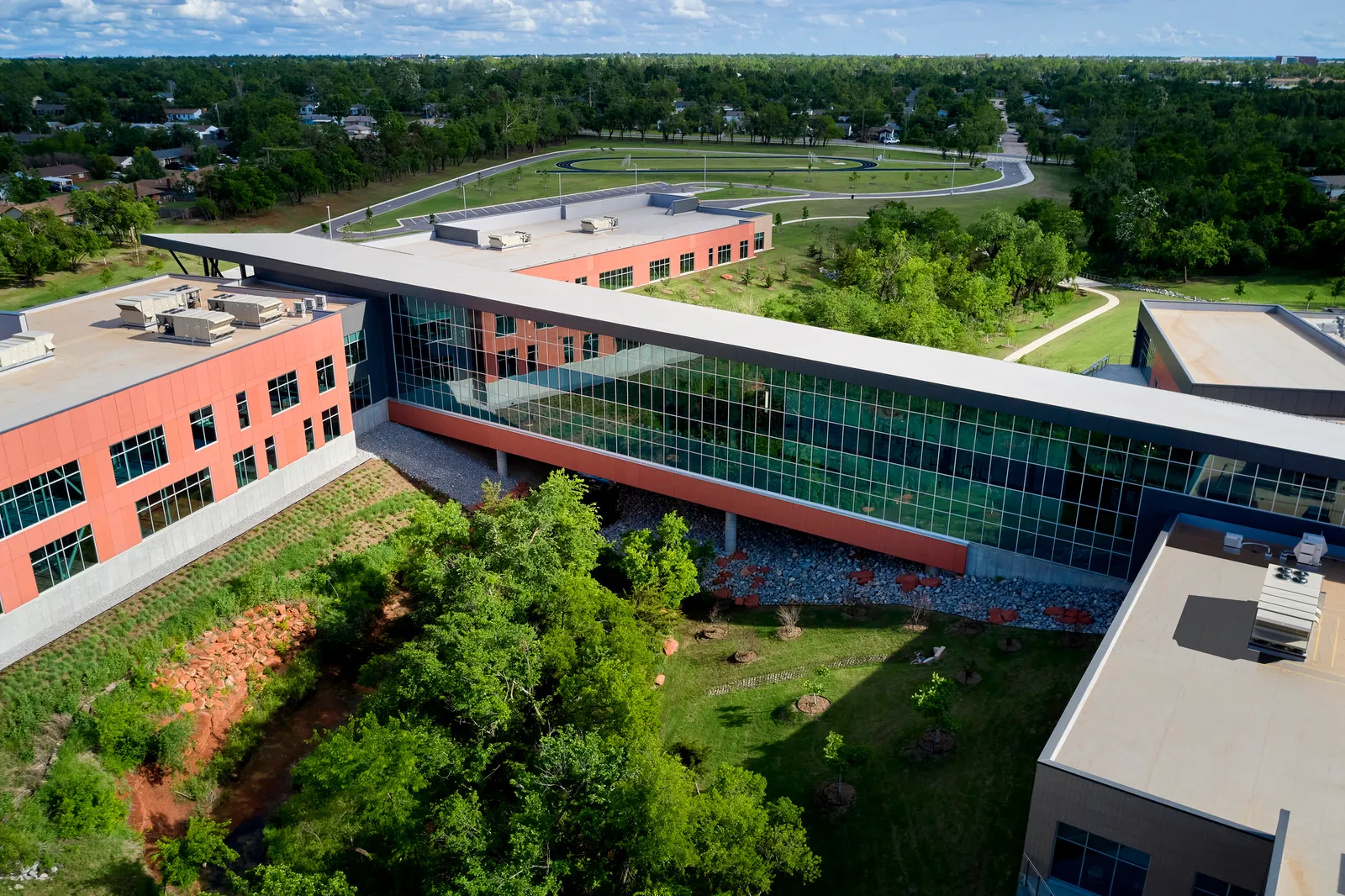
To collect feedback from stakeholders, the district worked with design firm DLR Group on outreach to not just the then-middle school students, but also to elementary and high school students.
Many of those providing input asked for a variety of spaces where they could work independently, in small groups, and in larger classes, Rhodes said.
"What you see today in Capps Middle School is a school that truly is flexible, because you can go to a space by yourself and work on a project or an assignment, or you can go out into a more open area and meet with a group for collaboration," he said.
Another suggestion led to teacher workrooms being put in each of the school's three grade-level sections — or "neighborhoods." This design puts the teachers and administrators for each grade closer to their classrooms, and students can more easily seek out their teachers for supports, Rhodes said.
The workrooms also provide grade-level teachers with space for planning and collaboration, he said. In past school designs he's familiar with, teachers would often stay in one classroom all day and use that classroom as their workspace and for teaching — leaving them little opportunity to mix with colleagues.
"You're going to get a better product if you give people an opportunity for input," Rhodes said.
In a survey conducted by DLR Group in spring 2022, 80% of students agreed the neighborhood design made them feel like learning is valued. And 70% said that being part of a neighborhood made them want to work hard. For teachers, 75% said the neighborhood design helped students take part in collaborative learning projects.
Tim Shimp, an educational learning designer with DLR Group and a former school superintendent, said the company wants to make sure it's not only bringing innovation to school design, but that a building "really, truly reflects the needs and the preferences of the end user."
To gather that input, Shimp said, the firm creates committees of students and staff who represent different grade levels and roles. Those groups may participate in workshops, site visits and other information-gathering activities, he said.
Technology is allowing designers and school leaders to simulate potential designs so they can evaluate traffic flow, stairway location and safety concerns, he said. Attention is also given to how spatial design contributes to mental and physical health, which in turn affects student achievement and growth.
"As designers, it's also understanding what are the challenges and the barriers, and what are the angsts that they have, and how can we address that through design?" Shimp said.
"I think when we can know the barriers and challenges, as well as the dreams and aspirations on the front end, then we're not bringing a design where they say, 'Well, you missed the mark,'" Shimp said of the collaboration process with school and district administrators.
Midtown High School
A renovation and addition to Atlanta's Midtown High School incorporated — at the request of the school community — design elements specific to the school's racially and economically diverse culture. Some of those elements include an outdoor plaza for community gatherings and a "care closet" to store donated products for students and families.
The overhaul of the historic 1920s building, completed in 2021, was designed by international architect firm Cooper Carry.

The new four-story design connected two existing buildings and enclosed the courtyard at the center of the campus. The addition includes dedicated spaces for engineering and technology, with lab and instructional space, a robotics flex lab, and an engineering drafting suite.
Sophia Tarkhan, leader in the pre-K-12 studio of Cooper Carry, said each school has its own character and culture. That means it's important for designers to engage with the school community on renovation and construction plans so planners can develop "a unique experience for the students of that community based on their culture, their identity," Tarkhan said.
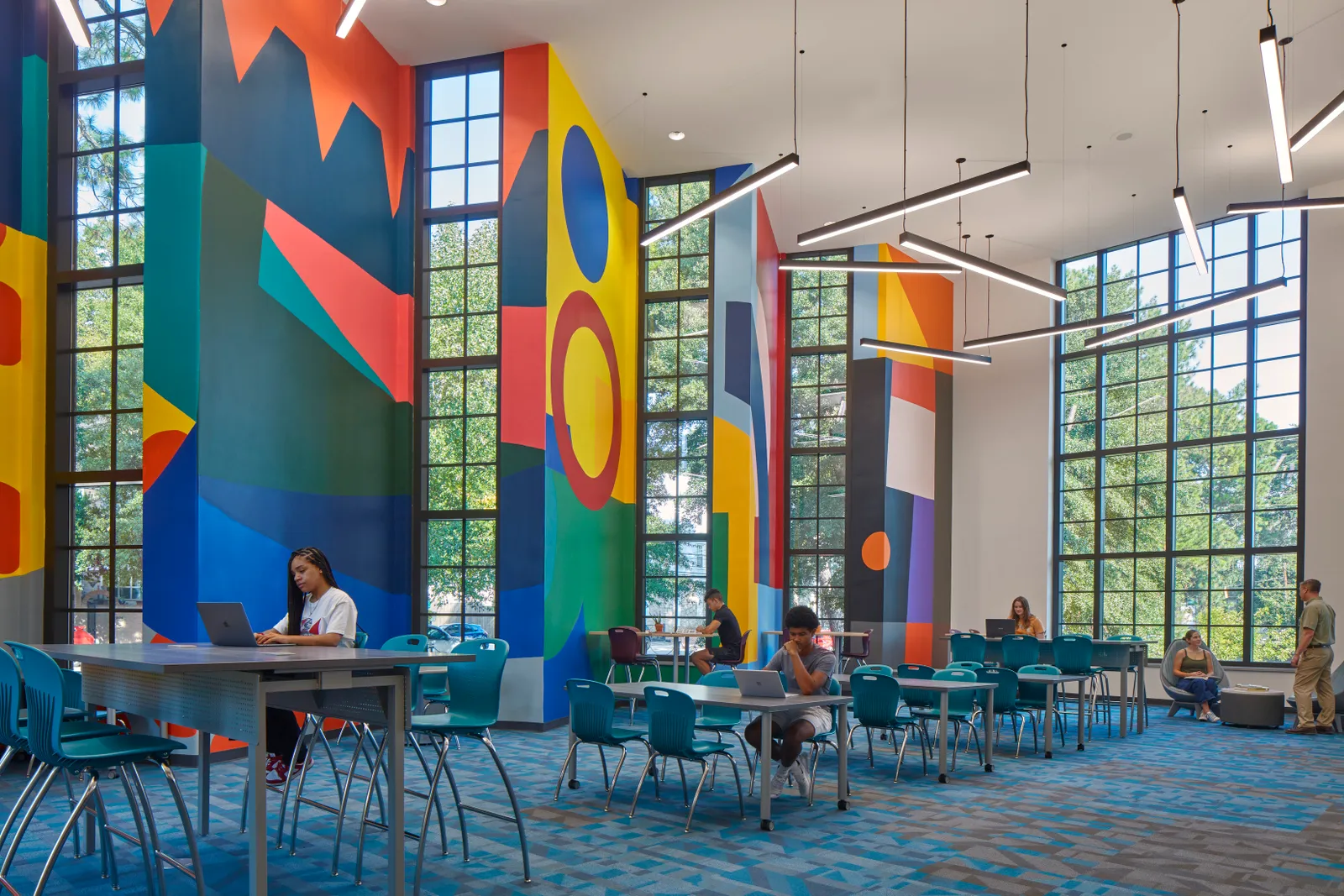
As part of the design process, the firm engages stakeholders through surveys, focus groups and open houses, Tarkhan said.
Maureen Wiechert, associate principal in the firm's pre-K-12 studio, said this approach "helps to build community support for the project," with those engagement activities being tailored for each project.
"It's not like a one-size-fits-all process.”



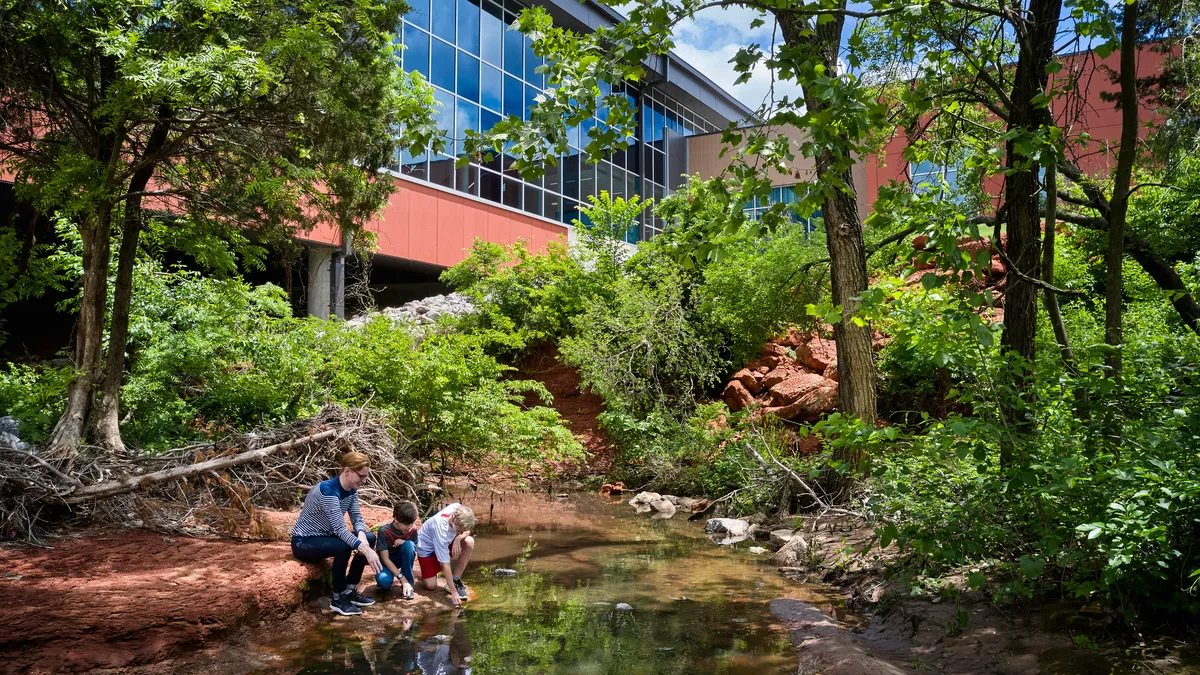




 Dive Awards
Dive Awards




